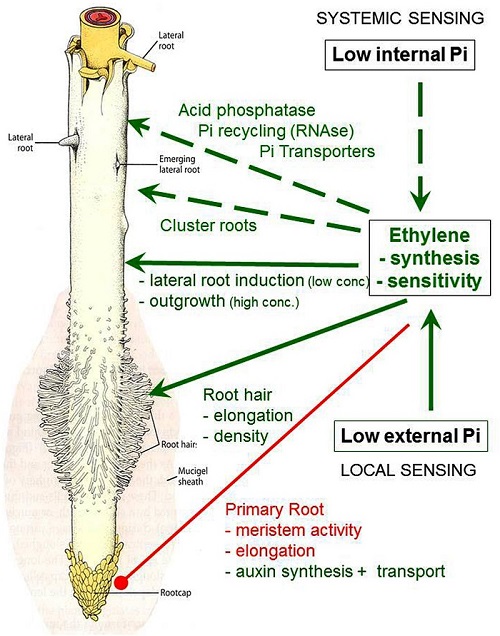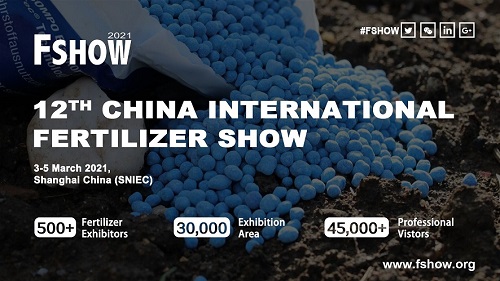
Exhibition time: 17-19 March, 2025 Shanghai, China
 中文
中文

Exhibition time: 17-19 March, 2025 Shanghai, China
 中文
中文
No matter what crop or plant you’re growing, healthy and strong roots are the foundation for maximum yields. Chris Bond breaks down how phosphorus and potassium each boost root power and growth.
Up, down, and all around; that’s how many horticulturists learn the rudiments of the big three macronutrients: nitrogen (N), phosphorus (P), and potassium (K) and their respective functions. Nitrogen is for the shoots, branches, and leaves; phosphorus is for the roots, and potassium is for overall plant health. While this is not entirely untrue, it is hardly the full story. Many elements play multiple roles in plant health and vital functions. Healthy roots require more than just phosphorus to thrive. All roots need air, water, and space between the soil or media particles to spread, grow, and latch on to. Phosphorus is indeed important for root health and development, but potassium does its part as well to help stimulate and strengthen plant roots.
To determine just which aspects of root development and health phosphorus is responsible for, many researchers will design experiments withholding gradually higher or lower levels of phosphorus and compare the results. This iteration is replicated on various aspects of root, shoot, leaf, or any other variable development on a diverse cross-section of species of plants under an array of conditions, all around the world. Phosphorus has been shown repeatedly to positively impact the total root length (TRL), average root diameter (ARD), and specific root length (SRL). Studies over decades have shown phosphorus has a meaningful effect on all root system morphology. Applications of phosphorus on plants ranging from legumes to grasses to herbaceous perennials to trees have shown significant increase in ARD and TRL. Results from a few follow here:

Primary Root Development and Phosphorus — In a study on the effects of varying amounts of phosphorus on the species Arabidopsis, researchers confirmed phosphorus deficiencies inhibit plant growth throughout the plant's root system. Low phosphorus levels were found to prevent or severely impede cell division in the meristematic region and at the same time encourage unwanted, premature cell differentiation within the root tip, which can result in suppression of any primary root growth. Low phosphorus levels conversely increase weaker, lateral root development. The same experiment found root length in phosphorus -deficient plants to be 0.6 times the length of control plants with proper or adequate phosphorus levels.
Root Length Distribution and Phosphorus — When comparing the root development of corn exposed to various treatments of nitrogen and phosphorus, researchers found corn that had been treated with phosphorus fertilizer and nitrogen fertilizer had six times the root length density at 12-18 inches and four times as great at 18-24 inch depths than with corn fertilized with only nitrogen.
Root Collar Diameter and Phosphorus — Another study focused on comparing root collar diameter among a range of seedling types. Those seedlings that received fertilizers containing phosphorus showed both increased plant height and root collar diameter. Plants in this particular study were treated with either no phosphorus (control plants), four grams of phosphorus, six grams, eight grams, or 10 grams. Not surprisingly, the plants with the widest root collar diameters corresponded respectively with the higher amounts of phosphorus.
Plant roots without sufficient access to phosphorus are difficult to spot. Phosphorus deficiencies do not always present as discoloration and are usually evident by overall slow growth or stunting of the plant. It can be corrected with the addition of fertilizers or amendments containing conventional or organic sources of phosphorus.
Phosphorus is indeed a necessary component of root development and health. It should however be noted many soils have adequate amounts of phosphorus and the addition of high phosphorus fertilizers may be at best, unnecessary, and at worst detrimental to healthy plant development. High levels of phosphorus in run-off can wreak havoc on local waterways and ecosystems. Too much phosphorus will encourage algae blooms in some waterways which will impeded the ability of light to penetrate the water surface and starve the flora and fauna that need it to live. Make sure before adding phosphorus to your plants, fields, or gardens (or any other nutrient), there is indeed a deficiency and a need for it.
The various roles potassium plays in plant and root development, as well as the myriad processes that it enables or assists, are still being learned. But there are some things about the role of potassium that are known. Potassium helps to mitigate a plant’s ability to effectively deal with drought, temperature extremes, and toxic levels of metals and salts. A lack of potassium is known to increase a plant’s susceptibility to a host of diseases and various infestations. This makes plants vulnerable to the ravages of a variety of stressors. Additionally, a lack of sufficient potassium has been shown to suppress root growth in a range of plant species. A likely, equal number (to those examining effects of phosphorus on plant roots) of studies and experiments have been undertaken on countless species of plants to determine the effects of potassium on root development and morphology. What follows are a few of those findings:
1. Sweet potatoes (Ipomoea batatas (L.)) grown in soil deficient in potassium displayed reduced levels of the total biomass productivity and root yields.
2. Root ability to conduct water or perform other hydraulic functions is greatly suppressed when there is a lack of potassium. In a study of common beans, there was a positive correlation between the ability to uptake water and the ability to absorb available potassium.
3. Potassium has been found to ameliorate toxicity from heavy metals such as cadmium and zinc in bean plants. Plants exposed to these metals at high levels will evince reduced root and shoot lengths.
4. Applications of potassium on various rice cultivars increased the biomass, length, and root diameter. Interestingly, higher levels of potassium were shown to reduce the concentration of calcium, magnesium, and sulfur, but allowed for increased efficiency in the rice plants’ usage of those same elements even while reducing the amount they could absorb.
5. Corn plants with low levels of potassium, consistently showed poor primary root growth. Studies were conducted given varying levels of potassium fertilizers to these corn plants and were shown to have an increase of primary root length proportionate to the amount of potassium given. Corn plants given four to 10 grams of potassium, showed primary root lengths of 0.6 to 1.4 times larger than the control corn plants which were given no additional potassium.
How do you know if your roots don’t have enough potassium? It will be evident in the roots themselves, generally as a stunted appearance. But short of digging them up, potassium deficiencies begin in the lower older leaves and work themselves upwards.

It cannot be stressed enough that without a soil test or analysis of your soilless media, there is no way to accurately tell if your plant’s roots have access to enough phosphorus and potassium to properly function and grow. A do-it-yourself kit or a professional lab analysis will reveal the present and desired levels of phosphorus and potassium. Either option is relatively inexpensive and will save the expense of adding unneeded fertilizer. If results do indicate a need to add phosphorus and/or potassium, remember the following:
Plants don’t know the difference between organic, chemical, or conventional sources of potassium and phosphorus. These distinctions may be important to the grower or end user, but on the chemical level, the plant doesn’t “see” these differences.
Chemical and conventional forms of phosphorus and potassium tend to be water soluble and in higher concentrations than in organic forms. Water soluble forms of nutrients are activated upon the introduction of moisture. Your plant roots will take what they can and any excess will either leach out or run-off. Keep these fertilizers dry or they will become useless before applying them. Organic forms of phosphorus and potassium tend to be much lower in concentration, but your plant roots have an opportunity to use all of it. Organic nutrients are usually activated by the slow, microbial activity in the soil. Most organic sources of phosphorus and potassium are slow release, so don’t expect immediate results.
Phosphorus and potassium may be in sufficient quantities in your soil, but your pH may be preventing your plants from using them. Different soil pH’s lock up or inhibit the release and uptake of various vital plant nutrients. Phosphorus is most available to your plant roots at pH’s in the range of 6.5-7.5, and then at pH over 8.5 (though this is extremely alkaline and few plants could thrive in such a high pH). Potassium is most available to plant roots at a pH of 6.0 and higher.
It is important to not underestimate the importance of the roles phosphorus and potassium play in the health and development of your plants’ root systems. Don’t think, though, that other nutrients don’t play supporting roles in root health. All necessary nutrients work in concert to support critical functions from the cellular to the macro-levels. Don’t, however, skimp on two of the most important ones for roots — phosphorus and potassium.
From MaximumYield
